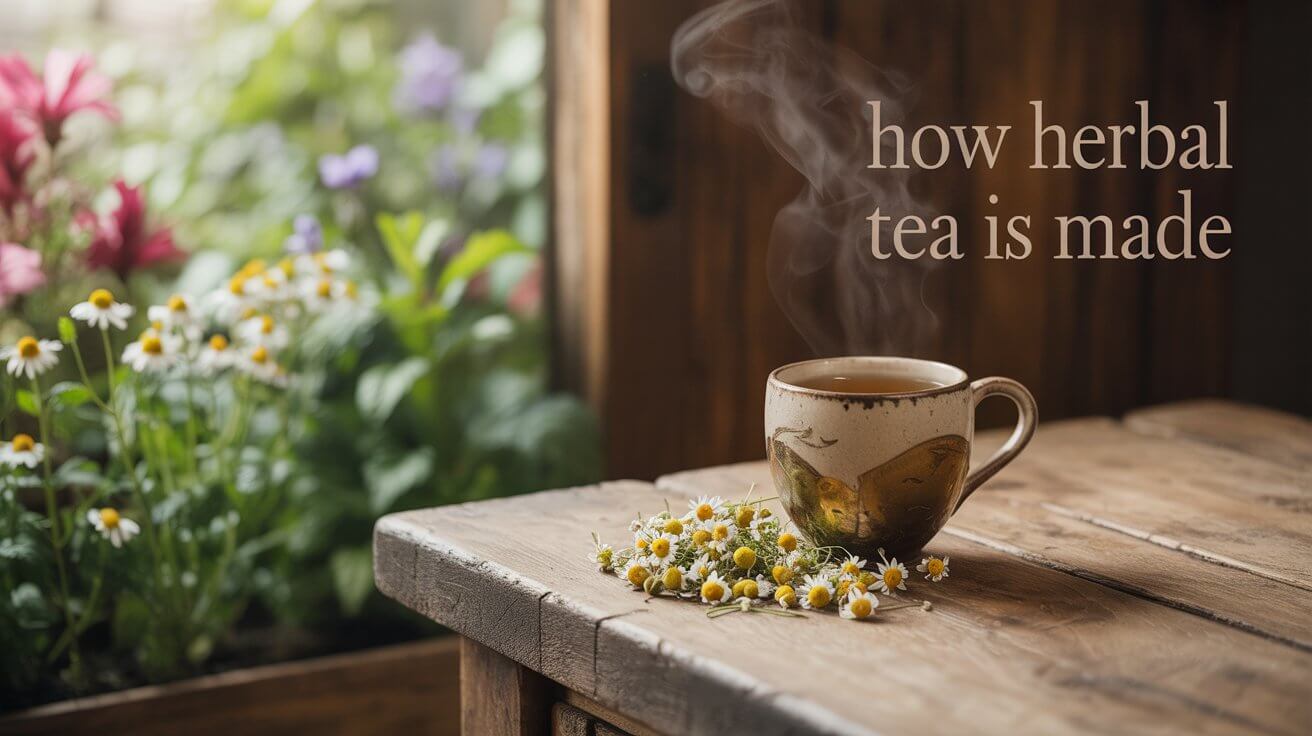Herbal tea isn’t just a beverage it’s a centuries-old wellness ritual that continues to evolve with science and sustainability. Unlike traditional teas that come from the Camellia sinensis plant (the source of green, black, and oolong teas), herbal teas are crafted from dried herbs, roots, flowers, and fruits each offering unique aromas and therapeutic benefits.
As of 2025, herbal tea production has seen a major shift toward organic cultivation, climate-controlled drying, and precision blending, ensuring better flavor and more consistent health effects. Let’s explore how herbal tea travels from plant to cup and what makes each step crucial for quality and wellness.
Step 1: Choosing and Harvesting the Right Herbs
The journey begins with selecting the perfect combination of herbs not just for taste but for functionality. Each herb brings its own wellness role to the blend.
Popular herbs and their benefits:
-
Chamomile – Calms the nervous system and promotes better sleep.
-
Peppermint – Aids digestion and reduces bloating.
-
Hibiscus – Supports heart health and provides antioxidants.
-
Ginger – Enhances metabolism and relieves inflammation.
-
Dandelion root – Acts as a natural detoxifier and mild diuretic.
Timing is everything: harvesting herbs at their peak essential oil concentration ensures maximum potency. For instance, leaves are typically gathered early in the morning, while delicate blossoms like chamomile or hibiscus are harvested once fully open.
2025 Sustainability Insight: Leading herbal tea producers now use AI-assisted farming and solar dehydration systems to monitor plant health and harvest timing preserving up to 40% more bioactive compounds than traditional methods.
If you’re interested in blends designed for weight management and digestion, explore related insights on our blog:
Step 2: Drying and Preserving the Herbs
Drying is the bridge between the garden and your teacup and it’s one of the most critical stages for preserving flavor and health benefits.
Traditional drying methods involve hanging herbs upside down in a warm, ventilated area for several days. Modern producers, however, use controlled dehydration units or low-heat drying tunnels (below 100°F/38°C) to lock in delicate oils without scorching them.
Proper drying prevents mold, maintains vivid color, and preserves volatile compounds like terpenes and flavonoids the key elements responsible for both the tea’s aroma and its therapeutic properties.
According to a 2024 study by the International Herbal Research Council, teas dried at stable low temperatures retained up to 30% more antioxidants compared to sun-dried counterparts.
A visual comparison chart (showing traditional vs. modern drying outcomes) could be included here to highlight this difference.
Step 3: Blending – The Art and Science Behind Every Cup
Blending herbal tea is where creativity meets chemistry. Expert blenders combine herbs not only for taste but also for synergistic health effects.
For example:
| Blend Type | Ingredients | Purpose |
|---|---|---|
| Calming Blend | Chamomile + Lavender | Reduces stress and supports sleep |
| Digestive Blend | Ginger + Peppermint + Fennel | Relieves bloating and aids gut balance |
| Detox Blend | Dandelion + Green Tea + Lemon Peel | Supports liver health and metabolism |
| Vitamin C Blend | Hibiscus + Rosehips | Boosts immunity and refreshes flavor |
Pro Insight (2025): Many commercial slimming teas now use micro-blending where herbs are ground and mixed under low oxygen conditions to preserve potency and ensure consistency from batch to batch.
If your goal is slimming or detox, you’ll find detailed comparisons of metabolism-boosting blends on our All Day Slimming Tea blog.
Step 4: Brewing the Perfect Cup
Now comes the transformation from dried herb to a soothing infusion. But brewing isn’t just about pouring hot water; it’s about extracting the right compounds.
Optimal brewing tips (for 2025 blends):
-
Water temperature: 200°F (93°C) — hot enough to extract oils but not scorch herbs.
-
Steeping time: 5–10 minutes for full flavor; denser roots (like ginger) may need longer.
-
Cover while steeping: This traps aromatic vapors and prevents essential oils from evaporating.
-
Enhancers: Add lemon, honey, or a cinnamon stick for extra depth and natural sweetness.
Based on recent sensory studies, covering your cup during steeping retains up to 15% more antioxidant activity and results in a stronger aroma profile.
Step 5: Homemade vs. Store-Bought Herbal Teas
Homemade teas allow full control over ingredients and freshness perfect for experimenting with your favorite herbs. However, store-bought premium blends offer consistency, safety testing, and expert formulation.
Comparison Table:
| Feature | Homemade Tea | Store-Bought Premium Tea |
|---|---|---|
| Freshness | High (if herbs are fresh) | Moderate, depends on storage |
| Consistency | Variable | Professionally balanced |
| Safety Testing | None | Often lab-tested |
| Convenience | Requires prep | Ready-to-brew |
| Slimming Options | DIY trials | Scientifically formulated blends |
For wellness or weight goals, professionally crafted slimming teas offer a reliable option combining detoxifying herbs with metabolism support in one cup. You can explore recommended options and expert reviews on our blog:
Final Thoughts: The Journey from Plant to Cup
The making of herbal tea is a process rooted in nature and refined by science. From harvesting herbs at peak vitality to drying, blending, and brewing, each stage affects not only the flavor but also the wellness potential of your tea.
As of 2025, herbal teas are crafted with greater precision and environmental awareness than ever before preserving both the planet and the power of plants. Whether you’re experimenting with homemade infusions or enjoying expert-crafted slimming teas, every cup is a reminder that wellness can be steeped, one sip at a time.


Leave a Reply